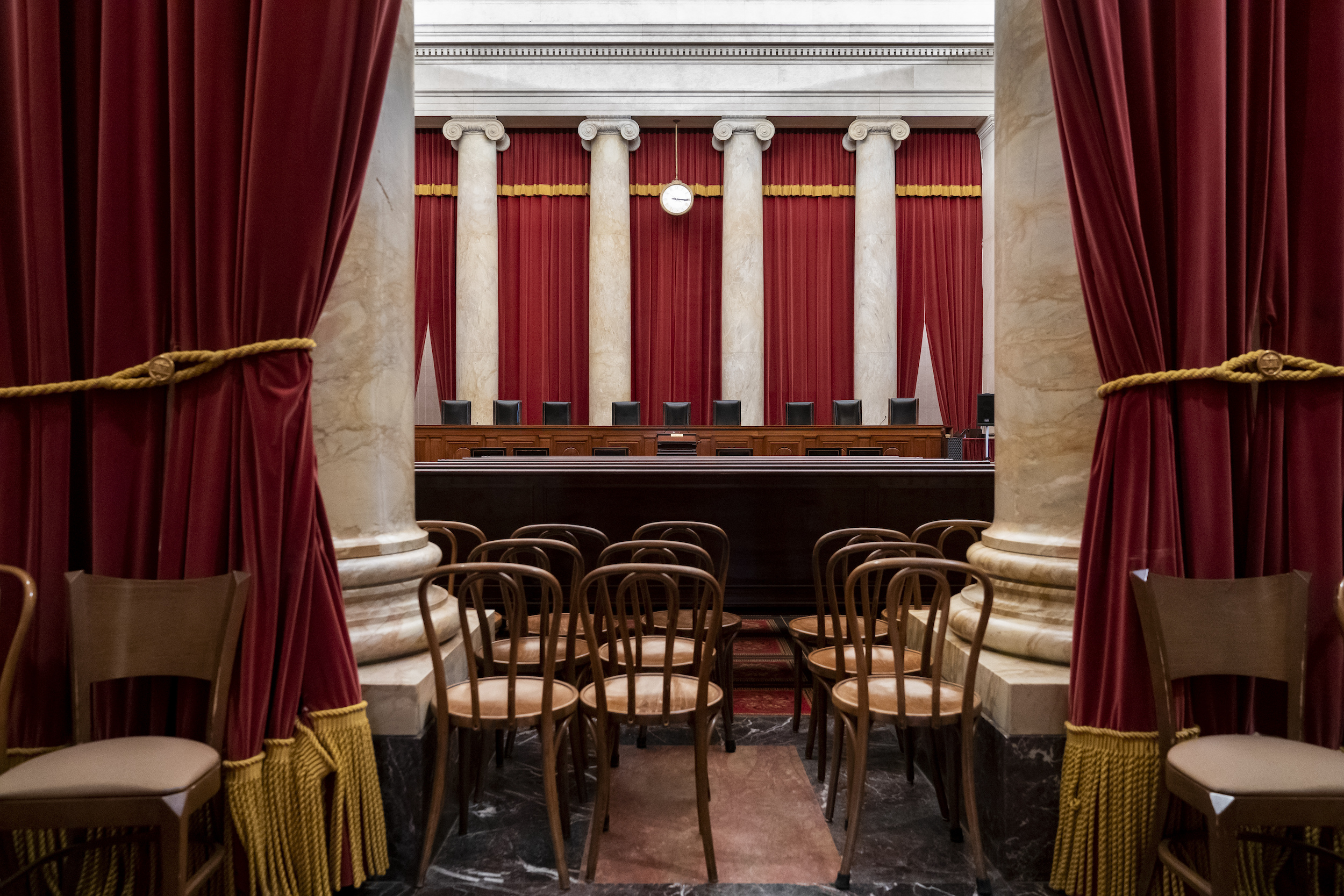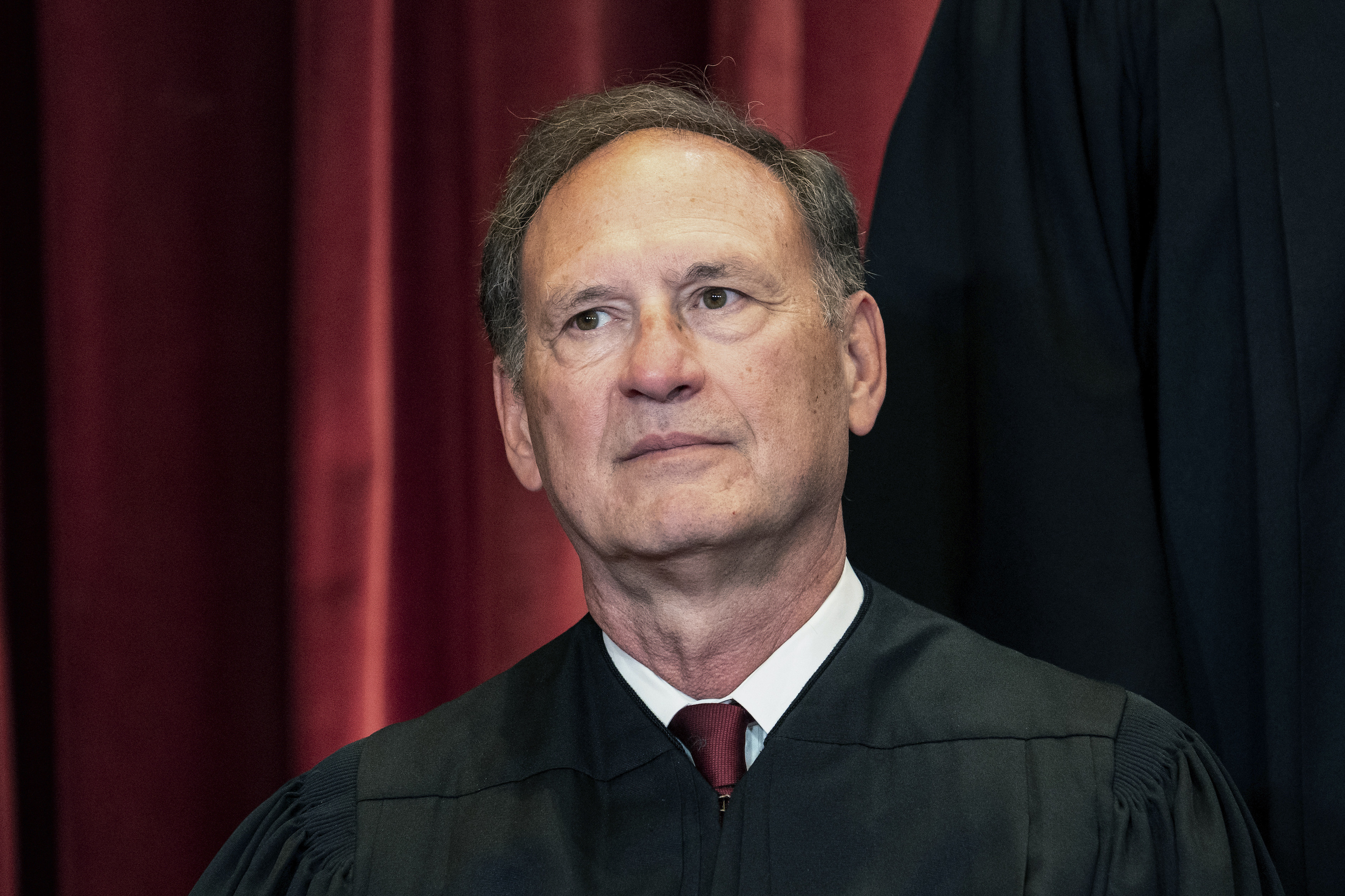Some of the most important moves by the Supreme Court in the past few years haven’t followed the traditional process of briefs, oral arguments, and private discussions among the justices to produce lengthy, heavily footnoted opinions.
Some procedural actions by the justices have come to be known collectively as the “shadow docket” — and as the number and importance of these decisions has increased, so have the concerns raised by scholars, senators, and even some of the justices themselves. They say the decisions are rushed, that they don’t allow for full arguments, and that the rulings are less transparent than typical cases.
This summer alone, the court issued 11 such opinions, compared with three during a similar period in 2016, according to calculations by Bloomberg. Nominally, these decisions have been technical in nature, but they have addressed more hot-button issues than in the past.
The matters that have recently been addressed in “shadow docket” decisions — that is, decided on procedural grounds rather than on the merits, and often with brief or unsigned opinions — have included then-President Donald Trump’s travel ban and his proposed changes to how the U.S. Census counts U.S. residents. They have also included several cases addressing the competing interests between public health protections and in-person religious observances.
Just in the past few months, the Supreme Court has produced several high-profile examples of potentially far-reaching decisions that didn’t stem from a full arguing of a case or a long climb through the ranks of lower courts.
In one recent decision involving a highly controversial abortion case, Chief Justice John Roberts used his dissent to complain that “we are asked to resolve these novel questions — in the course of two days, without the benefit of consideration by the District Court or Court of Appeals — without ordinary merits briefing and without oral argument.”
Meanwhile, one conservative justice, Samuel Alito, fired back in a high-profile speech. Alito took aim at critics who, he said, were using the “catchy and sinister term ‘shadow docket.’” He urged the use of the term “emergency docket” instead.
“You can’t expect the EMTs and the emergency rooms to do the same thing that a team of physicians and nurses will do when they are handling a matter when time is not of the essence in the same way,” Alito said.
Here are some of the most widely noted cases of this type in recent months:
- In a one-paragraph order in August, the justices let stand a lower court ruling requiring the Biden administration to restart the “remain in Mexico” policy for asylum seekers, which the administration had tried to end.
- Also in August, the justices blocked a federal anti-eviction measure that the administration had defended on public health grounds during the coronavirus pandemic. This move had been teed up in June when Justice Brett Kavanaugh signaled, in a one-page opinion, that an attempt to extend the eviction moratorium without Congress’ assent would likely be struck down by a majority of justices.
- Then, shortly before midnight on Sept. 1, five justices prevailed in a decision not to block a Texas law that would ban abortions after six weeks, including in cases of rape and incest, to be enforced by citizen lawsuits. Critics said that the law would effectively contradict the longstanding decision in Roe v. Wade, yet the majority decision was just one page long and was unsigned; the four separate dissents, some of them heated, totaled 11 pages.
We thought it was a good time to explain how we got here.
What’s the definition of the “shadow docket”?

The empty courtroom is seen at the U.S. Supreme Court in Washington as the justices prepare final decisions of the high court’s term, Monday, June 24, 2019. (AP Photo/J. Scott Applewhite)
In the normal course of events, the Supreme Court will agree to hear a case after it has made its way up through multiple levels of lower courts, with decisions made at each level. Once the Supreme Court officially decides to consider a case, briefs are filed by all parties and an hour-long oral argument is held.
Eventually, a lengthy opinion is produced, with the majority and, often, a minority writing one or more opinions. From start to finish, the time between the Supreme Court accepting a case and the release of an opinion can take up to a year.
By contrast, items that are “emergency” actions are decided on an expedited basis, said University of Pennsylvania law professor Kermit Roosevelt. Often, these cases will involve the lifting or continuance of a lower court ruling. Rather than months, lawyers may have days to assemble their briefs.
Such cases are usually resolved “with terse orders that provide minimal explanation for the decision,” said Carl Tobias, a law professor at the University of Richmond. Sometimes these orders are not even signed by each justice, potentially leaving unclear which justice supported or opposed the majority ruling.
Is this a new phenomenon?
The term is new, but the concept is not.
The Supreme Court has been dealing with emergency petitions “all the way back to the court’s beginnings in 1790,” said University of Texas law professor Steve Vladeck.
Historically, most of the court’s procedural orders have been relatively uncontroversial, Vladeck has written, though he added that high-profile rulings have come out now and then. Past decisions have included “orders blocking and then clearing the way for the execution of Julius and Ethel Rosenberg in 1953 and orders blocking and then clearing the way for the continued bombing of Cambodia in 1973,” Vladeck wrote.
The term “shadow docket,” however, only emerged in 2015, in a journal article by William Baude, a University of Chicago law professor. Baude and several other legal scholars confirmed to PolitiFact that Baude coined the term.
So why are we hearing about it now?
Legal experts say that the term caught on in legal circles — and increasingly among the general public — because its use seems to be growing, along with its influence on the law.
By Vladeck’s count, the court issued 28 orders during the Trump administration to block adverse lower-court rulings as the government mounted an appeal. By comparison, the court issued four such orders under presidents George W. Bush and Barack Obama combined. “This had the effect of allowing the government to enforce policies that had been invalidated by every other court ruling on their legality,” Vladeck said.
Since Justice Amy Coney Barrett was confirmed in October 2020, Vladeck has written, the court has issued seven emergency injunctions to block state coronavirus restrictions alone, compared to just four injunctions blocking all types of state laws during the first 15 years of Roberts’ tenure.
Jonathan H. Adler, a Case Western Reserve University law professor, said the number and reach of such cases has expanded, although there is debate about why that’s the case.
“Some point their finger at the court, some believe the court is responding to external factors, and some believe it is a mix,” Adler said. He added that the uptick in the impact of these cases began prior to the confirmation of Trump’s nominees, and that it has been exacerbated by the pandemic, which has raised some novel and time-sensitive legal questions about the constitutionality of public health restraints.
“The numbers are also affected by multiple instances of the court doing the exact same thing or dealing with the same cases or issues repeatedly,” Adler said. “There are six orders concerning the travel ban litigation, for instance, and multiple entries for Census litigation.”
Why could growth in these sorts of cases be seen as a problem?

Associate Justice Samuel Alito sits during a group photo at the Supreme Court in Washington, Friday, April 23, 2021. (Erin Schaff/The New York Times via AP, Pool)
Some of the criticism has an ideological color, since many such decisions have gone against left-leaning policies. Some legal observers suggest that its use offers the court’s conservative majority a shortcut to desired policy goals without fully going on the record about their logic or addressing the counter-arguments.
“The shadow docket is being used more than before, and some liberal commentators argue that the court’s shadow docket decisions are often badly flawed and/or serve a conservative agenda,” said Ilya Somin, a George Mason University law professor.
Still, much of the criticism has sprung from less ideological concerns, including the lack of opportunity to make detailed arguments to the justices, the faster turnaround by the justices, the shorter opinions, and in some cases the absence of transparency about which justices comprised a majority.
The Supreme Court’s orders can also be confusing to lower courts, Baude of the University of Chicago has written. “Because the lower-court judges don’t know why the Supreme Court does what it does, they sometimes divide sharply when forced to interpret the court’s non-pronouncements,” wrote Baude, a former clerk for Roberts.
Some have also warned of double standards in recent orders.
The decision that allowed the Texas abortion law to stand “gives you a sense of how the court thinks about irreparable injury — yes for believers denied the ability to congregate, no for women prevented from obtaining abortions,” Roosevelt said.
Some justices themselves have expressed concerns — not just Roberts, but also Elena Kagan, who wrote in her dissent in the Texas abortion case that “the majority’s decision is emblematic of too much of this court’s shadow-docket decisionmaking — which every day becomes more unreasoned, inconsistent, and impossible to defend.”
Meanwhile, Alito has aggressively pushed back on such criticism.
In a speech at the University of Notre Dame, Alito called “false and inflammatory” the notion that the Texas abortion decision nullified Roe v. Wade, saying it was purely a procedural decision. He said critics of recent orders were wrong to allege that “a dangerous cabal is deciding important issues in a novel, secretive, improper way in the middle of the night, hidden from public view.”
Do these decisions have less value for legal precedent than fully decided cases?
There’s some dispute about how much legal precedent a “shadow docket” case provides.
The longstanding assumption is that they have less precedential value than fully argued and decided cases, because “they rarely resolve cases on the merits and almost by definition are temporary,” Tobias said.
In addition, Somin said, the fact that “they are less fully reasoned also means they provide less detailed guidance to lower courts.”
That said, lower courts do take them seriously. And some legal observers express concern that the seriousness with which lower courts take these pronouncements has grown in recent years.
“The worry is that the court has increasingly been using them to make new law and then rely on them in future cases,” Roosevelt said.
For instance, the Supreme Court chastised a San Francisco-based federal appeals court for failing to properly follow four prior orders in coronavirus cases, Vladeck has written. “The Court is directly instructing lower courts to treat at least some of these orders as precedential,” Vladeck told PolitiFact.
Adler, however, said he doesn’t “particularly agree” with Vladeck’s assertion that the court has been treating these cases as precedential.
“We would expect the court to treat like cases alike, and we would expect lower courts not to repeat the errors that prompt Supreme Court action,” Adler said. “Neither makes a shadow docket order ‘precedential.’”
This article was originally published by PolitiFact, which is part of the Poynter Institute. It is republished here with permission. See the sources here and more of their fact checks here.







